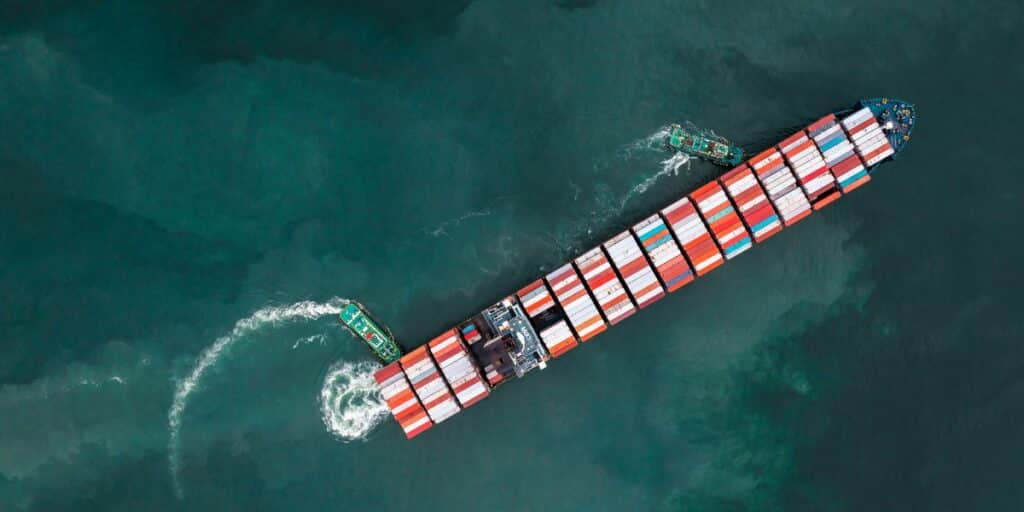From air pollution to biodiversity loss, environmental concerns are increasingly growing across the world.
To find the appropriate solutions, the use of data has become imperative for the environmental performance management of organizations and governments. If it helps them to reduce their environmental impact, it also assists them to be compliant with regulations.
This article will develop the importance of data by explaining its role in monitoring environmental factors, the power of analytics with Artificial Intelligence, and the concept of a data-driven decision-making process with its associated challenges.
Data’s role in environmental monitoring
Control environmental metrics
To fight against climate change, it is essential to understand the current condition of our environment better.
Data is one of the tools used to achieve this goal by measuring key indicators. They are categorized to establish four types of environmental monitoring:
- Water quality: water can be contaminated with waste and harmful toxins, making it dangerous for human health and detrimental to ecosystems. Water quality indicators such as pH, dissolved oxygen, conductivity, or temperature, are measured remotely thanks to sensors placed on platforms. Software like Sinay’s Water Module is then used to analyze all the variables in real-time.
- Noise pollution: human activities on land or at sea are sources of noise and it disrupts underwater life, particularly marine megafauna. Installing acoustic sensors combined with a powerful API helps find solutions to reduce sound levels. The Noise Emission API developed by Sinay provides accurate values to confirm vessel compliance with Lloyd’s and Bureau Veritas standards.
- Air quality: energy sector contributes significantly to air pollution through the emission of NOx or particulate matter. Their concentration can be assessed by sensors connected to systems dedicated to air quality management, e.g., Sinay’s Air Module.
- Biodiversity: to monitor marine life, Sinay is currently creating a new module called SeaLife. Users will get real-time alerts regarding the impact of their operations on underwater species to take prompt corrective action.

Provide accurate and reliable information
The observation of several environmental metrics guides scientists and politicians to establish regulations. The validity of values collected by sensors must therefore be checked to be used as a decision-making tool. Nowadays they are not only exploited by governmental institutions but also by corporations.
The reception of updated data helps them to create a strategy planning model in order to manage their environmental footprint. Before they can be exploited, they have to pass a verification and validation process to guarantee the quality and performance of the data provided. Without these steps, there are risks to exploit inaccurate information, and consequently of taking inappropriate action.
That’s why it is important for a business to take into account several factors for efficient environmental management. For instance, regarding the decarbonization of vessels, ship owners and superintendents will crossref indicators related to air quality, fuel consumption, or route optimization to find the most appropriate solutions to reduce emissions.
Environmental monitoring with technologies
Companies must exploit equipment fitted on board vessels to collect data remotely. The following list, which is not exhaustive, provides examples of these technologies :
- Automatic Identification System (AIS): AIS uses transponders to transmit vessel information such as MMSI number, position, or speed. Authorities track vessels’ movement thanks to AIS to identify pollution and control the respect of regulations in sensitive areas.
- Voyage Data Recorder (VDR): VDR records crucial data about the ship’s voyage including audio communication from the bridge. It can be compared to the black boxes fitted on airplanes. In case of an accident, VDR contributes to the investigation by aiding in the assessment of the potential environmental impact. By analyzing the various stages that may have led, for example, to pollution, recommendations and regulations can be made to avoid similar incidents in the future.
- Vessel Monitoring System (VMS): VMS is a tracking device as AIS but it is fitted onboard fishing vessels. Authorities can therefore monitor fishing activities and prevent illegal practices. VMS inputs can be combined with the results of observations made at sea to study the fish population in a specific area. In France, the aim of the Obsmer Program is to bring observers on board fishing vessels to collect data related to catches. Sinay takes part in it by having embarked sea observers in the main fishing ports of the French coasts.
Sensors can also be fitted in different places on the ship and on different equipment to enable remote monitoring and improve efficiency. Smart ships using these advanced technologies rely on Big Data, the Internet of Things (IoT), and artificial intelligence (AI) to process these vast quantities of information and variables.

The power of data analytics in environmental insights
Definition of data analytics
In the shipping industry, the data collected are not limited to the ship operation and its impact. They also cover port and terminal operations, logistics, and supply chain management. Analytics is used to transform this multitude of information into actionable knowledge. This concept is similar to data analysis with the exception that analytics also uses advanced techniques to make predictions. The process is divided into several steps:
- Define the needs: this first step is the determination of the goal of the analysis.
- Collect: different types of variables from internal or external sources are collected.
- Clean: duplicate or unnecessary inputs are deleted to ensure accuracy.
- Analyze: there are several techniques to perform the analysis of data. Descriptive analytics summarizes historical data whereas a predictive analytic model is focused on future trends. Values can be transformed into graphics, charts, or other visual element to make them more understandable. This method is called data visualization.
- Interpret: the results are finally interpreted to find the best courses of action.
Analytics enables a business to enhance its operational efficiency, store substantial data volumes, and reduce costs by finding the best strategies to implement. It can be for the optimization of routes to reduce fuel consumption, make port traffic more fluid and avoid port congestions, or automate operations.
The application of data science within a shipping company is now essential to stay competitive in the market and to attain continuous improvement in environmental performance. For the nations, it is also a way to estimate their Environmental Performance Index (EPI) and measure their sustainability.
The use of AI in data analysis
AI can be combined with analytics for faster data processing and better accuracy. This method called AI analytics automates the process of analysis with machine learning (ML). It is a form of AI that focuses on systems that learn, or improve their performance, based on the data they process.
The way in which this learning takes place can be divided into four types: supervised, unsupervised, semi-supervised, and reinforcement leanings. Data scientists will choose one of these algorithms depending on what they want to predict and their strategy. The adoption of AI in the maritime industry has redefined the way vessels are operated and maintained. Information provided by sensors fitted on engines is analyzed by AI to predict when maintenance is needed and thus avoid costly breakdowns.
The implementation of this type of proactive maintenance within a fleet also decreases the environmental damage caused by unscheduled repairs. AI analytics addresses challenges that might not be apparent to shipping companies with the use of traditional methods.

The prediction of environmental trends
Data analysis has become essential for the management of the five environmental impacts related to shipping: air pollution, noise pollution, vessel discharges, port congestion, and marine species invasion. Predictive analytics is used to forecast certain phenomena or identify disruptions:
- Air pollution: fluctuations in the quality of air are detected and areas at high risk of pollution are identified as well as the sources. At Sinay, we developed a CO2 API to calculate carbon emissions from a sea voyage. It has also been certified by the Smart Freight Center as part of the Global Logistics Emissions Council (GLEC) framework.
- Noise pollution: sound exposure level (SEL) is estimated to ensure compliance with international standards on radiated underwater noise emissions.
- Vessel discharges: water discharges can affect the marine environment and human health. AI uses statistical factors to predict the quality of water.
- Port congestion: smart ports use AI to prevent port congestion by managing vessel traffic and cargo operations in real-time. This proactive method reduces delays, optimizes the time ships spend at berth and leads to smoother port operations.
- Marine species invasion: machine learning algorithms can monitor the displacements of invasive species by utilizing information gathered from sensors. The increase in their population can be controlled and their impact on native species minimized.
Data-driven decision-making (DDDM) process for environmental performance
What is DDDM?
DDDM process is based on the interpretation of variables. This concept runs counter to a decision-making method based solely on intuition, feelings, or expertise.
With DDDM, a business can guarantee that its decisions and its goals have been set thanks to objective and concrete information. This approach constructs a more rational, strategic, and logical decision-making process. For a shipping company, its implementation is no longer a choice. It is now mandatory to invest in data analytics to increase productivity and to remain compliant with new standards in terms of safety, security, but also in terms of sustainability.
The future of environmental performance in the maritime industry is indeed currently undergoing a revolution driven by more stringent regulations and the introduction of technological advancements based on data and AI. By interpreting reliable values, metrics, insights, and facts, DDDM helps to reduce the environmental footprint of the maritime sector.
Challenges in implementing DDDM
Even if DDDM brings several benefits to a company, its implementation is not without its challenges.
These challenges have to be overcome to ensure the validity of the DDDM process. Otherwise, decisions with a negative impact on the company’s initial objectives could be taken. Regarding environmental performance management, the first challenge is the poor quality and availability of data. If they are inaccurate or incomplete they can lead to erroneous conclusions.
This can happen in case of duplications, inconsistencies, or integration issues. That’s why data quality objectives (DQOs) are recommended to be decided from the start. It is also recommended to construct protocols and procedures to ensure that data are always collected in the same manner. They can be established on the basis of international regulations, recommendations, or ISO standards. Another challenge concerns the infrastructure.
DDDM required advanced installations for storage and the process of a large volume of data. An organization must have the necessary financial resources to finance the total cost of their IT systems update.
The last challenge is the inability to correctly interpret the information collected. Skilled data scientists can help a firm with a lack of analytical skills in their DDDM process.

Importance of data-sharing
Among the main environmental topics the IMO is focusing on, there is the optimization of fuel consumption. It requires gathering data from the sensors fitted on the engine with external parameters such as weather conditions.
This example illustrates how important data sharing is. It expands the number of available variables, and consequently, the decisions made are more shrewd. This concept of data sharing can also be applied on a larger scale.
The Shared Environmental Information System (SEIS) has been established by the European Commission to improve the exchange of environmental data across Europe. Data sharing is important for a government, but also inside an organization to remove barriers between departments.
All the teams of a firm contribute to the DDDM by making their data easily accessible to others. This collaboration between different functions constructs a pooling of all the knowledge, skills, and expertise to speed up the decision-making process. For a business, it is also a way to improve its Corporate Social Responsibility (CSR) model and its Environmental, Social, and Governance (ESG) score.
Conclusion
As of now, data combined with AI and analytics is helping the shipping industry to take the appropriate actions to improve its environmental performance. By embracing data-driven decision-making processes, the maritime sector is moving towards a sustainable transformation to achieve green shipping.
Frequently Asked Questions About Data for Environmetal Performance
Data enables the accurate monitoring of various environmental indicators, including water quality, noise pollution, air quality, and biodiversity. Sensors and technologies are used to remotely collect and analyze data, ensuring real-time insights that assist in tracking and managing these crucial environmental metrics.
Data analytics transforms vast amounts of information into actionable knowledge. It not only summarizes historical data but also employs predictive models to anticipate future trends. This process aids in optimizing routes, reducing fuel consumption, streamlining port operations, and automating various aspects of maritime activities, leading to continuous improvements in environmental performance.
Implementing DDDM comes with challenges such as ensuring data quality and availability, establishing suitable protocols for consistent data collection, addressing infrastructure requirements, and interpreting complex data. Skilled data scientists play a crucial role in overcoming these challenges and maximizing the benefits of data-driven environmental management.
Focus on data to make effective decisions
Discover our modules
Environmental Monitoring
Monitor air quality in real-time, be alerted when a threshold is reached & easily comply with regulation thanks to the automated reports.
Monitor water quality in real-time, predict and avoid water pollution & comply with regulations thanks to the automated reports.
Deliver a preliminary metocean analysis and the associated report in jut a few minutes.
You may also be interested by those others environment application :





